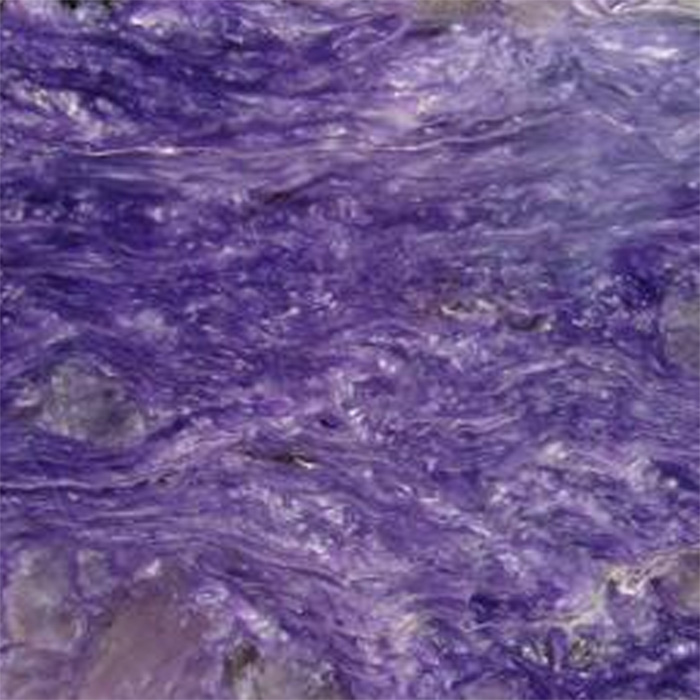Scientific Name: Silicate of potassium, calcium and sodium.
Group: Silicates
Chemical composition: (K,Na)5(Ca,Ba,Sr)8(Si6O15)2(Si6O16)(OH,F).nH2O
Colors: Purple swirls with black or green inclussions
Hardness: 5 to 6
Formation: Monoclinic crystal; Good cleavage in three directions; massive form; Vitreous to pearly luster.
Principal Sources: Russia.
Special Notes: The name for this stunning mineral comes from the impression that it gives “chary” (in Russian “charms” or “magic”) and/or for the Chara River near the main source in the Ural mountains of Russia. It is typically violet to deep purple in color and forms in a massive and fibrous crystal structure.
First described and introduced to the world in 1978, this mineral is only found in very limited deposits in the Sakha Republic, Yakutia, and Siberia in Russia. It is found where a svenite, the Murunskii Massif, has intruded into and altered limestone deposits producing a potassium feldspar metasomatite. Word on the street is that these deposits are almost empty, and that therefore the price of charoite will continue to go up as its scarcity increases.

